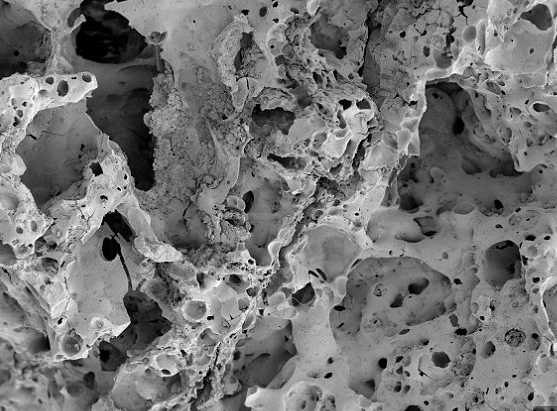
Archaeologists have unearthed evidence of the earliest evidence of bread-making, taking place 14,400 years ago in Jordan. The loaves of bread were made some 4,000 years before early humans started to grow and farm wheat, experts claim.Scientific analysis showed remains discovered in a fireplace were made using cereals that had been harvested, and cooked in the same fashion as modern baking.
Researchers believe the Natufian Culture may have sowed the seeds for the Neolithic(新石器时代) farming almost 5,000 years before it began in the Near East. The production of these first loaves may have been one of the key driving forces behind the later agricultural revolution, researchers now believe.
The findings were made at Shubayqa 1, which is located roughly 90 miles (150 km) northeast of Amman, in Jordan. The remains were analysed, which showed the early loaf – a kind of flatbread – was made with barley, einkorn and oat.
Amaia Arranz Otaegui from the University of Copenhagen added, “The presence of hundreds of food remains in the fireplaces from Shubayqa 1 has given us the chance to know 14,000-year-old food practices. The remains are very similar to flatbreads found at several Neolithic and Roman sites in Europe and Turkey. So we now know that bread-like products were produced long before the development of farming.”
In December, archaeologists announced they had uncovered evidence showing farming and house building among the group was more widespread than previously believed. The neolithic crops, like wheat and barley, are believed to have begun almost 5,000 thousand years later, and the Natufian Culture may have sown the seeds for this revolution to take place. Dating of the finds suggests the culture was more widespread and much earlier than previously thought.
本时文内容由奇速英语国际教育研究院原创编写,未经书面授权,禁止复制和任何商业用途,版权所有,侵权必究!(投稿及合作联系:028-84400718 QQ:757722345)
1.What is the main idea of the first paragraph?
A Earliest evidences of bread-making were found.
B The loaves of bread were made 4,000 years ago.
C The fireplace was made by human using cereals.
D Cereals had been cooked in the same modern way.
解析:选A。段落大意题。根据第一段第一句Archaeologists have unearthed evidence of the earliest evidence of bread-making,taking place 14,400 years ago in Jordan. 可知该段主要讲述了考古学家发现了最早制作面包的证据。故选A。
2.The underlined word “it” in the second paragraph may refer to ______.
A the Near East agriculture
B the Natufian Culture
C the Neolithic farming
D the later agricultural revolution
解析:选C。词意指代题。根据第二段第一句Researchers believe the Natufian Culture may have sowed the seeds for the Neolithic farming almost 5,000 years before it began in the Near East.可知在新石器时代的农业之前已经有面包出现了,这里的it指代“新石器时代的农业”。故选C。
3.Which of the following is the earliest evidence of bread-making from Paragraph 4?
A Flatbreads found at Neolithic sites.
B Ancient Roman’s modern bread.
C Bread in Europe and Turkey.
D Food remains from Shubayqa 1.
解析:选D。细节理解题。根据第四段第一句中的The presence of hundreds of food remains in the fireplaces from Shubayqa 1 has given us the chance to know 14,000-year-old food practices.可知是在舒蓓亚一号考古现场发现的食物残渣中发现了古老面包的存在。故选D。
4.What conclusion did archaeologists draw from their research?
A Ancient people didn’t grow crops.
B The Natufian culture was widely spread.
C Ancient people didn’t have seeds.
D The way of house building was not found.
解析:选B。细节理解题。根据最后一段第三句Dating of the finds suggests the culture was more widespread and much earlier than previously thought.可知纳吐夫文化比人们想象的传播得更加广泛。故选B。